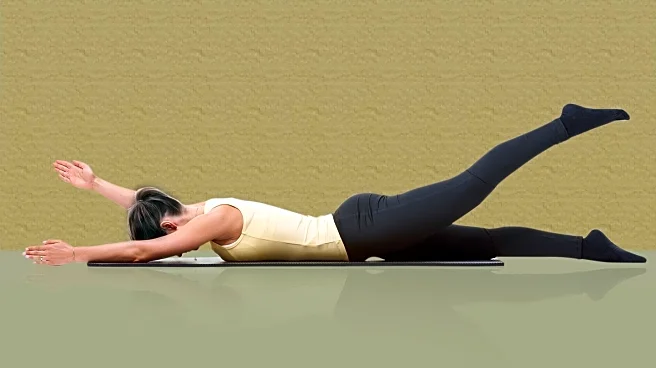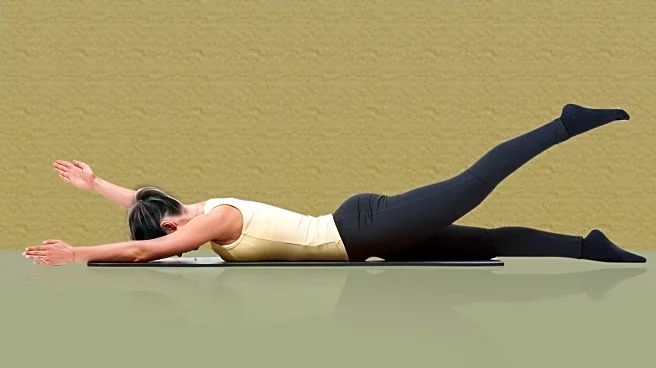What is the story about?
What's Happening?
Japanese walking, or interval walking, is gaining popularity as a workout routine that alternates between fast and slow walking. This method, first described in a 2007 study, has been shown to improve strength, endurance, and blood pressure more effectively than regular walking. The technique involves walking fast for three minutes, followed by three minutes of slower walking, repeated for a total of 30 minutes. It is particularly beneficial for cardiovascular and respiratory systems, offering a low-impact alternative for those unable to engage in high-impact cardio.
Why It's Important?
The Japanese walking technique is important as it provides a simple, accessible way to enhance physical fitness and health. It is particularly beneficial for individuals who are at risk of chronic diseases or those experiencing a weight loss plateau. The method's ability to improve cardiovascular health and endurance makes it a valuable tool for maintaining health and preventing age-related declines in physical fitness. Its popularity on social media platforms highlights a growing interest in fitness routines that are easy to incorporate into daily life.
What's Next?
As the Japanese walking technique continues to gain popularity, it may be adopted by more fitness enthusiasts and health professionals as a recommended exercise routine. The method's simplicity and effectiveness may lead to further research and adaptations, potentially incorporating mindfulness or other health-promoting practices. Fitness influencers and trainers may develop new programs based on this method, expanding its reach and impact on public health.
Beyond the Headlines
The Japanese walking technique reflects a broader trend towards mindful and accessible fitness practices. It emphasizes the importance of consistency and routine in maintaining health, aligning with cultural practices that prioritize regular movement and mindfulness. This approach to exercise may inspire a shift away from high-intensity workouts towards more sustainable and holistic health practices.
AI Generated Content
Do you find this article useful?














